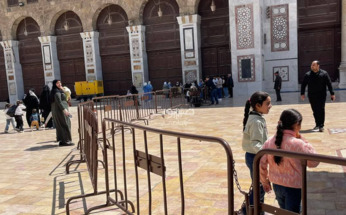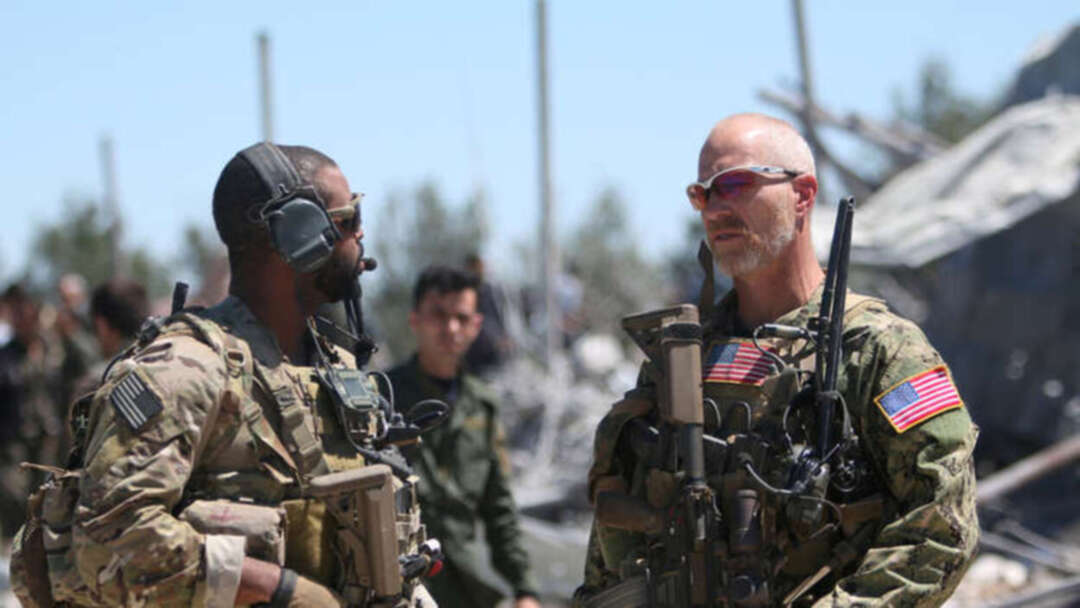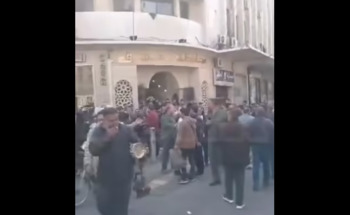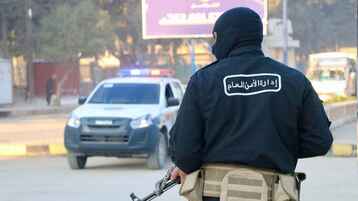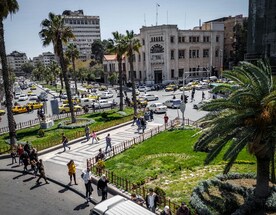-
Conflict in Yemen’s south has a complex history: Federalism is the only solution

Recent fighting in Yemen’s south has been portrayed as a simple conflict between the government and an apparently unified front of southern separatists. The reality is more complicated.
The Southern Transitional Council (STC) recently clashed with the UN-recognized government of Yemen in the country’s south. While both parties oppose the Iran-backed Houthi militia, who seized the capital Sanaa in a 2014 coup, they have different visions for the future of Yemen. The STC wants South Yemen to secede, while the government is committed to a unified Yemen.
The STC has often been falsely depicted as the sole representative of the Southern Movement, which advocates for the secession of the south. In fact, it is one of various southern groups who want to secede but disagree on the time and method. These secessionists are part of a broader variety of factions in southern Yemen, each with their own interests and goals.
The roots of southern separatism
Southern separatism stems from dissatisfaction with the unification of Yemen in 1990. Ali Abdullah Saleh, who had been president of North Yemen, became the first president of unified Yemen following years of tensions between North and South Yemen. Following the 1993 parliamentary elections, the balance of power began to shift in favor of northern politicians. Some factions within the Socialist Party (the ruling party in South Yemen pre-1990) started to raise doubts concerning northern elites’ commitment to partnership with the South.
In 1994, the Yemeni civil war broke out between pro-union northern forces and southern separatists. Northern forces defeated the southern Socialist Party within two months. While the Socialist Party claimed to represent the interests of southern Yemen, other southern leaders – including current President Abdrabbuh Mansur Hadi - did not share their vision for separatism, fearing tensions and instability.
However, alienation since the end of the war increased demands for succession.
North Yemenis dominated key military and political positions for almost two decades, with southern military personnel were sent to early retirement. In 2007, some of these southern former military demanded to be reinstated in the military. Saleh’s government’s response was heavy-handed, causing the protestors to escalate their demands. This Southern Movement accused the regime of corruption, oppression and of deliberately marginalizing southern Yemen politically and economically. It saw secession as the answer.
Impact of Saleh’s fall
The Southern Movement’s agenda was further boosted by the 2011 Arab Spring.
Anti-Saleh protests gave an opportunity to fly the flag of the former South Yemen in the streets of Aden and the southern groups were able to organize protests more openly. Calls to remove Saleh and his family from power were no longer tied to the Southern Movement but in cities across Yemen. However, many southerners still remained lukewarm to the idea of an independent southern state post-Saleh.
After Saleh’s fall from power in February, 2012, Hadi became president. Under Hadi, Yemen entered the National Dialogue Conference (March, 2013 – January, 2014) aimed at determining the country’s future. The National Dialogue called on all parties – including southern separatists – to enter a joint dialogue which would solve Yemen’s issues, most pressingly the issue of southern separatism.
Southerners had a variety of reactions to the National Dialogue. Some groups joined, others boycotted. Among those who boycotted were groups who joined the government as a Southern block because they believed they could achieve more being part of the process. Other groups like the Hadhramaut General Congress believed that the Hadhramaut region has been marginalized from both north and south, with their main demand being to have more autonomy over their region. The Mahra tribal movement called for similar autonomy.
Some southerners saw the National Dialogue as a promising move toward a federal system in which power was decentralized and regions fairly represented. Others believed the dialogue was cover for continued dominance by Northern elites. The most radical strand of the Southern Movement opposed the National Dialogue because it rejected secession.
The Houthis move south
Against these varied southern responses, the National Dialogue foundered and war broke out. As President Hadi tasked a committee to draft a new constitution and called for a referendum, the Houthis launched their offensive from their stronghold in Saada. They captured Sanaa in September, 2014, and consolidated their control in January, 2015, when they placed the Yemeni government and President Hadi under house arrest. In March, 2015, the Houthis entered Aden, the biggest city and former capital of South Yemen.
The Southerners worst fears had come true. They viewed the Houthis as Northern conquerors who had undermined the National Dialogue in an attempt to seize power. The Houthis alliance with former president Saleh, the president whom southerners had been protesting against since 2007, added salt to the wound.
As a result, the Southern Movement took up arms against the Houthis and forces loyal to former President Saleh. Between March and July, 2015, Aden witnessed brutal street fighting. After four months, southern fighters, supported by the Arab Coalition, managed to push the Houthis out of most southern provinces.
However, the conflict left behind a variety of southern militant groups, each with their own allegiances and aims. The STC rose out of this context.
Clashes in the south
Clashes between the STC and Hadi’s government were a product of competition over Aden, where both parties were based since the government had been displaced from Sanaa.
The STC established control over Aden’s security through its paramilitary group known as the Security Belt, which did not coordinate with the government’s Ministry of Interior. Official authorities and human rights groups have accused the Security Belt of committing violations against citizens from northern Yemen and running inhumane unofficial detention centers.
These tensions erupted in August, 2019, when the STC called its supporters to fight against the government to “liberate” the south. The Security Belt took control of Aden, but faced a government counterattack in Shabwa, east of Aden. The Security Belt expelled thousands of northern citizens from Aden and promoted anti-northern rhetoric. The STC therefore established itself as the predominant southern actor through force.
Today, both sides look like they are preparing for a second round of clashes, despite the ceasefire negotiations in Jeddah hosted by Saudi Arabia. Nevertheless, they have both said they are willing to negotiate, which has been commended by the joint Saudi-UAE committee.
The need for the National Dialogue
With talks ongoing, which outcomes can stop the conflict?
Implementing the outcomes of the National Dialogue outcomes will help placate southern separatist demands. The National Dialogue outcomes lies in the heart of any political settlement to Yemen’s current conflict and resolves the core issues of Southern marginalization over the last two decades.
The National Dialogue outcomes suggested establishing a federal system which fairly allocated power and resources to each region. They also suggested that southerners hold at least 50 percent of military and government positions, to ensure they are reincorporated into the state structure. Both these recommendations will help solve Yemen’s current issues.
Many southerners do not share the STC’s combative approach. The National Dialogue outcomes might not be perfect, but the public did not have the chance to give their vote in an open and transparent referendum – they should be given this option.
source:Baraa Shaiban
You May Also Like
Popular Posts
Caricature
BENEFIT AGM approves 10%...
- March 27, 2025
BENEFIT, the Kingdom’s innovator and leading company in Fintech and electronic financial transactions service, held its Annual General Meeting (AGM) at the company’s headquarters in the Seef District.
During the meeting, shareholders approved all items listed on the agenda, including the ratification of the minutes of the previous AGM held on 26 March 2024. The session reviewed and approved the Board’s Annual Report on the company’s activities and financial performance for the fiscal year ended 31 December 2024, and the shareholders expressed their satisfaction with the company’s operational and financial results during the reporting period.
The meeting also reviewed the Independent External Auditor’s Report on the company’s consolidated financial statements for the year ended 31 December 2024. Subsequently, the shareholders approved the audited financial statements for the fiscal year. Based on the Board’s recommendation, the shareholders approved the distribution of a cash dividend equivalent to 10% of the paid-up share capital.
Furthermore, the shareholders endorsed the allocation of a total amount of BD 172,500 as remuneration to the members of the Board for the year ended 31 December 2024, subject to prior clearance by related authorities.
The extension of the current composition of the Board was approved, which includes ten members and one CBB observer, for a further six-month term, expiring in September 2025, pending no objection from the CBB.
The meeting reviewed and approved the Corporate Governance Report for 2024, which affirmed the company’s full compliance with the corporate governance directives issued by the CBB and other applicable regulatory frameworks. The AGM absolved the Board Members of liability for any of their actions during the year ending on 31st December 2024, in accordance with the Commercial Companies Law.
In alignment with regulatory requirements, the session approved the reappointment of Ernst & Young (EY) as the company’s External Auditors for the fiscal year 2025, covering both the parent company and its subsidiaries—Sinnad and Bahrain FinTech Bay. The Board was authorised to determine the external auditors’ professional fees, subject to approval from the CBB, and the meeting concluded with a discussion of any additional issues as per Article (207) of the Commercial Companies Law.
Speaking on the company’s performance, Mr. Mohamed Al Bastaki, Chairman BENEFIT , stated: “In terms of the financial results for 2024, I am pleased to say that the year gone by has also been proved to be a success in delivering tangible results. Growth rate for 2024 was 19 per cent. Revenue for the year was BD 17 M (US$ 45.3 Million) and net profit was 2 Million ($ 5.3 Million).
Mr. Al Bastaki also announced that the Board had formally adopted a new three-year strategic roadmap to commence in 2025. The strategy encompasses a phased international expansion, optimisation of internal operations, enhanced revenue diversification, long-term sustainability initiatives, and the advancement of innovation and digital transformation initiatives across all service lines.
“I extend my sincere appreciation to the CBB for its continued support of BENEFIT and its pivotal role in fostering a stable and progressive regulatory environment for the Kingdom’s banking and financial sector—an environment that has significantly reinforced Bahrain’s standing as a leading financial hub in the region,” said Mr. Al Bastaki. “I would also like to thank our partner banks and valued customers for their trust, and our shareholders for their ongoing encouragement. The achievements of 2024 set a strong precedent, and I am confident they will serve as a foundation for yet another successful and impactful year ahead.”
Chief Executive of BENEFIT; Mr. Abdulwahed AlJanahi commented, “The year 2024 represented another pivotal chapter in BENEFIT ’s evolution. We achieved substantial progress in advancing our digital strategy across multiple sectors, while reinforcing our long-term commitment to the development of Bahrain’s financial services and payments landscape. Throughout the year, we remained firmly aligned with our objective of delivering measurable value to our shareholders, strategic partners, and customers. At the same time, we continued to play an active role in enabling Bahrain’s digital economy by introducing innovative solutions and service enhancements that directly address market needs and future opportunities.”
Mr. AlJanahi affirmed that BENEFIT has successfully developed a robust and well-integrated payment network that connects individuals and businesses across Bahrain, accelerating the adoption of emerging technologies in the banking and financial services sector and reinforcing Bahrain’s position as a growing fintech hub, and added, “Our achievements of the past year reflect a long-term vision to establish a resilient electronic payment infrastructure that supports the Kingdom’s digital economy. Key developments in 2024 included the implementation of central authentication for open banking via BENEFIT Pay”
Mr. AlJanahi concluded by thanking the Board for its strategic direction, the company’s staff for their continued dedication, and the Central Bank of Bahrain, member banks, and shareholders for their valuable partnership and confidence in the company’s long-term vision.
opinion
Report
ads
Newsletter
Subscribe to our mailing list to get the new updates!

